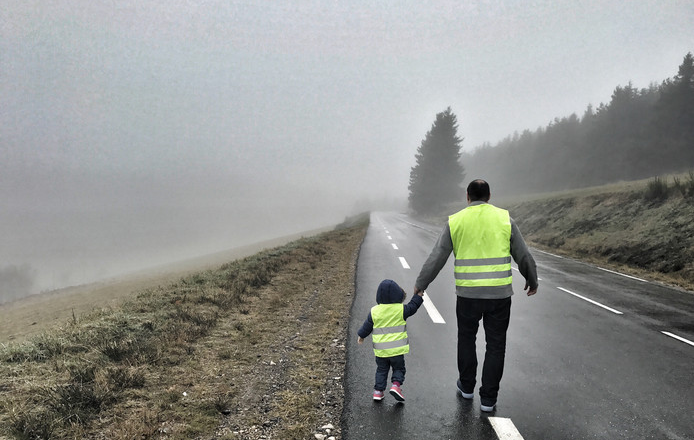Pedestrians are involved in an accident four to five times more often in the winter than in the spring and summer. Certainly, now that the clock is going back, police and ANWB are calling on pedestrians to wear lighting or reflective material.
In the dark winter months, more accidents always happen. But new accident figures requested by the AD show that pedestrians, in particular, are much more at risk in the winter. There are four to five times more pedestrian collisions in the winter than in the spring and summer. Cyclists are three times as likely to be involved in accidents in the winter period.
Egbert-Jan van Hasselt, who is responsible for road safety at the National Police: “We have been paying a lot of attention to bicycle lighting for years, but the pedestrian has been underexposed.” so stand out in the statistics. We call on pedestrians: wear lighting or reflective vest! As a pedestrian, make sure that you are visible to your environment.”
The ANWB also supports this call. “From this weekend the winter time starts and you run more risks because of less visibility,” explains ANWB spokesperson Annelies Tichelaar. “Be sure of that at crosswalks and make sure that you are clearly visible.”
Every winter it is certainly about collisions with two hundred pedestrians. But because the registration of pedestrian accidents is far behind that of motorized traffic, it is possible that many more people are involved in crashes if they participate in traffic on foot.
According to the police, this often concerns people who, for example, walk their dogs late at night in a dark coat on unlit paths. The combination of “poor light, bad weather, and dark clothing” makes pedestrians “almost invisible,” according to Van Hasselt. “Even if you walk safely on the side of the road, if a car driver does not see that, you have no chance.”
The Dutch Association of Insurers emphasizes that it is particularly useful in rural areas to wear reflective clothing. “Certainly if there is no free cycle path or footpath, road users are at risk,” says spokesperson Rudi Buis. “There are many claims from the province, villages and outlying areas.”
According to insurers, children are also often involved in accidents in the dark, especially when it is raining or drizzling. “These are often older children who are on their way to the football club or to the violin by bike or on foot,” explains Buis. Now those children still go to the sports club in the light, but by winter time it will be dark from tomorrow. “People soon think: well, it’s only a small piece, that enlightenment will come later”, Buis continues. “But the injury they sustain is sometimes serious and there is a rehabilitation period attached to it.”
According to Veilig Verkeer Nederland, lighting or reflective clothing is especially important for pedestrians, because motorists are increasingly busy with other things while driving, such as the Smartphone. VVN spokesperson Rob Stomphorst: “Reflective clothing can ensure that a motorist can still see such a pedestrian or cyclist.”
